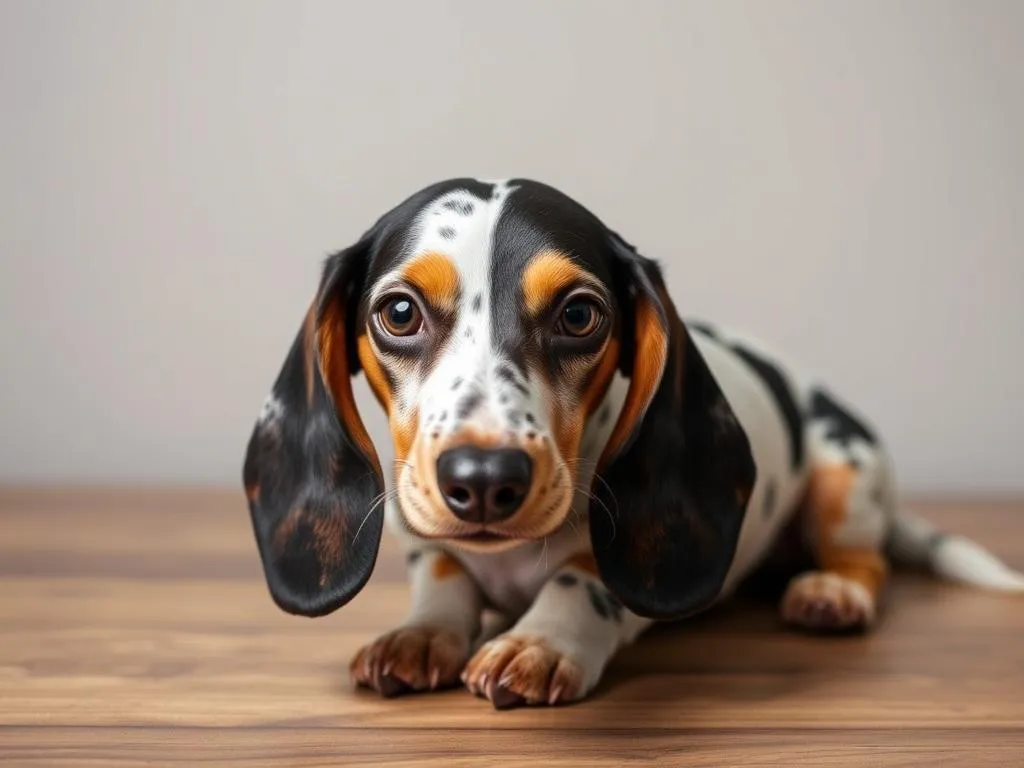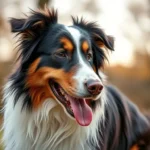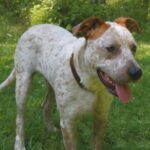
Introduction
Dog breeds represent the incredible variety of canine companions that have been developed over centuries through selective breeding. Each breed has unique characteristics based on genetic factors, physical features, and behavioral traits that make them suitable for various roles and lifestyles. Among these breeds, the piebald dachshund stands out with its distinct coloration and spirited personality.
The Dachshund, known for its elongated body and short legs, has captured the hearts of dog lovers around the world. The piebald dachshund is particularly fascinating due to its unique coat pattern, which adds an extra layer of charm to this already beloved breed. This article will delve deep into the world of the piebald dachshund, exploring its history, characteristics, care requirements, and much more.
Understanding Dog Breeds
What Defines a Dog Breed?
A dog breed is defined by a combination of genetic factors, physical characteristics, and behavioral traits that are consistent within a group of dogs.
- Genetic Factors: Each breed has a specific genetic makeup that determines its physical and behavioral traits.
- Physical Characteristics: These include size, coat type, and coloration, which can vary widely among breeds.
- Behavioral Traits: Different breeds exhibit unique personality traits that affect their temperament, trainability, and suitability for various roles, such as working, companionship, or hunting.
The Importance of Breed Selection
The selection of a dog breed is crucial for several reasons:
- Effects on Temperament: Different breeds have varying temperaments, which can influence how they interact with family members, other pets, and strangers.
- Health Considerations: Certain breeds are prone to specific health issues, making it essential to choose a breed that aligns with your lifestyle and ability to provide care.
- Compatibility with Lifestyle: Understanding a breed’s exercise and grooming needs can help ensure that your new furry friend fits seamlessly into your home.
Overview of the Dachshund Breed
History of the Dachshund
The Dachshund has a rich history that dates back to the 15th century in Germany. Originally bred for hunting burrowing animals such as badgers, the Dachshund’s long body and short legs made it an excellent digger. Over time, the breed evolved into various sizes and coat types, allowing for versatility in hunting and companionship.
Characteristics of the Dachshund
Dachshunds are categorized into three main sizes: standard, miniature, and toy.
- Size and Weight Categories:
- Standard Dachshunds typically weigh between 16 to 32 pounds, while miniature Dachshunds weigh up to 11 pounds.
- Coat Types:
- The breed comes in three distinct coat types: smooth, long-haired, and wire-haired, each requiring different grooming needs.
Temperament and Behavior
Dachshunds are known for their lively and courageous personalities. They are affectionate, loyal, and often form strong bonds with their owners. However, they can be stubborn, requiring consistent training and socialization from an early age. Common behavioral issues include barking, digging, and a tendency to chase small animals due to their hunting instincts.
Piebald Dachshund
What is a Piebald Dachshund?
A piebald dachshund is characterized by a specific coat coloration that features large patches of white fur interspersed with colored areas. This distinctive pattern is a result of a genetic trait known as piebald coloration, which differs from other patterns such as brindle or dapple.
Genetics of Piebald Coloring
The piebald coloring in Dachshunds is determined by the presence of the piebald gene. This gene affects the distribution of pigment in the dog’s coat, leading to the striking white patches. Understanding the genetics behind piebald coloring can help potential owners appreciate the uniqueness of their piebald dachshund.
Physical Traits
In terms of appearance, piebald dachshunds exhibit a beautiful blend of colors, often featuring black, chocolate, or red patches against a white base. Their physical characteristics, such as size and weight, align with those of standard Dachshunds. They maintain the breed’s typical proportions, making them as delightful to look at as they are to own.
Caring for a Piebald Dachshund
Nutrition and Diet
Proper nutrition is vital for the health of your piebald dachshund. A balanced diet that includes high-quality dog food, rich in protein and essential nutrients, is recommended.
- Recommended Dietary Needs: Look for dog foods that list meat as the first ingredient and are formulated for their specific life stage (puppy, adult, senior).
- Foods to Avoid: Avoid foods that are high in fillers, artificial preservatives, and harmful ingredients like chocolate, grapes, and onions.
Exercise Requirements
Dachshunds, including piebald dachshunds, require regular exercise to stay healthy and happy.
- Daily Exercise Needs: Aim for at least 30 minutes of exercise daily, which can include walks, playtime, or interactive games.
- Recommended Activities: Activities that engage their natural curiosity, such as scent games or agility training, can be particularly beneficial.
Grooming and Maintenance
Grooming needs will vary based on the coat type of your piebald dachshund.
- Grooming Needs: Smooth-coated Dachshunds require minimal grooming, while long-haired and wire-haired varieties will need regular brushing to prevent mats and tangles.
- Bathing, Brushing, and Nail Care: Regular baths should be given as needed, and nail trimming should occur every few weeks to keep their paws healthy.
Health Considerations
Dachshunds are prone to specific health issues, particularly related to their long backs.
- Common Health Issues: Conditions such as intervertebral disc disease (IVDD), obesity, and dental problems are common in the breed.
- Specific Concerns for Piebald Dachshunds: While piebald coloration is generally not linked to any unique health issues, it’s essential to monitor for hereditary conditions common in Dachshunds.
Training a Piebald Dachshund
Basic Training Tips
Training a piebald dachshund requires patience and consistency.
- Effective Training Methods: Positive reinforcement techniques, such as treats and praise, work best with this breed. Start with basic commands and gradually introduce more complex tasks.
- Importance of Socialization: Early socialization is crucial to help your Dachshund develop into a well-adjusted adult. Introduce them to various environments, people, and other pets.
Behavioral Challenges
While Dachshunds are affectionate, they can exhibit common behavioral problems.
- Common Behavioral Problems: Issues such as excessive barking, digging, and separation anxiety can arise if not properly managed.
- Solutions and Training Techniques: Establishing a routine, providing mental stimulation, and using distraction techniques can help mitigate these challenges.
Living with a Piebald Dachshund
Compatibility with Families
Piebald dachshunds can make wonderful family pets due to their loyal and playful nature.
- Suitability for Different Household Types: They adapt well to various living situations, from apartments to houses with yards.
- Interactions with Children and Other Pets: Supervised interactions with children and other pets can foster strong relationships, but early socialization is key to ensuring compatibility.
Creating a Safe Environment
Ensuring a safe living environment is essential for your piebald dachshund.
- Home Modifications for Safety: Use baby gates to prevent access to stairs and keep potentially harmful items out of reach.
- Outdoor Safety Tips: Always supervise outdoor play, especially in unfenced areas, to prevent them from chasing after small animals.
Finding a Piebald Dachshund
Where to Adopt or Buy
If you’re considering adding a piebald dachshund to your family, there are various options available.
- Reputable Breeders vs. Shelters: Responsible breeders prioritize health testing and temperament in their breeding programs, while shelters and rescue organizations can provide loving homes for dogs in need.
- Key Questions to Ask When Adopting: Inquire about the dog’s health history, temperament, and any known behavioral issues to ensure a good match.
Costs Involved
Understanding the financial commitment involved in dog ownership is crucial.
- Initial Costs: Adoption fees can range from $50 to $300, while purchasing from a breeder may cost between $500 to $3,000, depending on lineage and breeding practices.
- Ongoing Expenses: Prepare for ongoing costs such as food, grooming, veterinary care, and pet insurance, which can add up to several hundred dollars annually.
Conclusion
Owning a piebald dachshund can be a rewarding experience filled with joy and companionship. Their unique appearance and spirited personality make them a delightful addition to any home. Understanding their care requirements, training needs, and health considerations will ensure a happy and fulfilling life for both you and your new furry friend. Embrace the joys of owning a piebald dachshund and consider providing a loving home to one of these charming canines.









